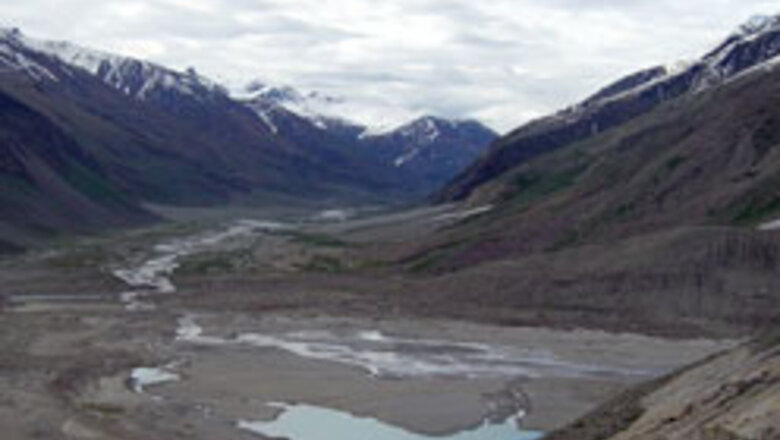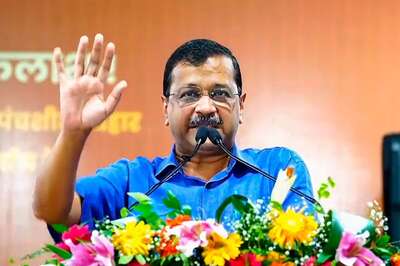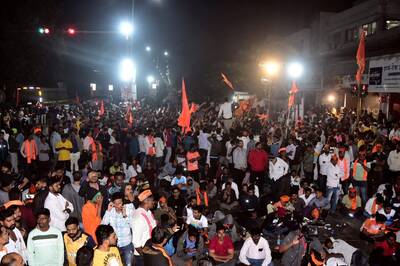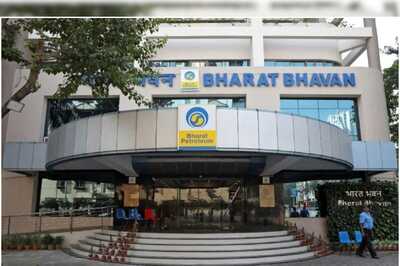
views
New Delhi: The Kargil War, also known as the Kargil conflict, was an armed conflict between India and Pakistan that took place between May and July 1999 in Kashmir.
In early May 1999, the Pakistan Army decided to occupy the Kargil posts, numbering around 130, in Drass, Kargil, Batalik sectors, and thus control the area.
The Government of India responded with Operation Vijay, a mobilisation of 200,000 Indian troops.
In effect, two divisions of the Indian Army, numbering 20,000, plus several thousand from the Indian Paramilitary Forces and the Air Force were deployed in the conflict zone.
The total number of Indian soldiers that were involved in the military operation on the Kargil-Drass sector was thus close to 30,000.
At the height of the conflict, the number of infiltrators, including those providing logistical backup, has been estimated to be 5,000.
The Pakistani shelling of the arterial road posed the threat of Leh being cut off.
As the operation was fully underway, over 250 artillery guns were brought in to clear the infiltrators in the posts that were in the line of sight.
The first major ridgeline to fall was Tololing in the Drass sub-sector on June 13, 1999 which was captured after several weeks of bitter fighting.
Tiger Hill was re-captured on July 5, 1999 and Point 4875, another dominating feature to the west of Tiger Hill and jutting into Mashkoh Valley, was re-captured on July 7, 1999.
Point 5203 was re-captured on June 21, 1999 and Khalubar was re-captured on July 6, 1999.
The Indian Artillery fired over 250,000 shells, bombs and rockets during the Kargil conflict.
Approximately, 5,000 Artillery shells, mortar bombs and rockets were fired daily from 300 guns, mortars and MBRLs.
Such high rates of fire over long periods had not been witnessed anywhere in the world since the second World War.
The IAF flew 5,000 sorties with 300 aircraft using 35,000 personnel and engaged targets at high elevation in the Himalayas.
It also claims to have flown 550 sorties in Kargil, though just about 80 were on or close to the target.
The loss of aircraft included one MiG-21 fighter and one Mi-17 helicopter, which were lost due to to shoulder-fired missiles by the enemy. In addition, one MiG-27 was lost the fighting ceased on July 26.
According to official figures, 527 soldiers and airmen died in the War, while more than 1400 were injured.
Also, 696 Pakistani soldiers were killed. Two soldiers were awarded the Nishan-E-Haider (Pakistan's highest military honour).
Another 90 soldiers were also given gallantry awards, most of them posthumously, confirming Pakistan's role in the episode.
PAGE_BREAK
In Kargil War, a total of 66 PVCs, MVCs and VrCs were awarded. These include -
Param Vir Chakra
Yogendra Singh Yadav (19)
18 Grenadiers, Param Vir Chakra
Captain Vikram Batra (24)
13 J&K Rifles, Param Vir Chakra
Lt. Manoj Kumar Pandey (24)
1/11 Gorkha Rifles, Param Vir Chakra
Lt. Keishing Clifford Nongrum (25)
12 J&K Light Infantry, Maha Vir Chakra
Captain N Kenguruse (26)
2 Rajputana Rifles, Maha Vir Chakra
Apart from Captain Kenguruse and Lt. Nongrum, there are seven other winners of the country's second-highest gallantry award.
Maha Vir Charka
Major Sonam Wangchuk
Ladakh Scouts
Major Vivek Gupta
2 Rajputana Rifles (posthumous)
Major Rajesh Adhikari
18 Grenadiers (posthumous)
Major Padmapani Acharya
2 Rajputana Rifles (posthumous)
Captain Anuj Nayyar
17 Jat Regiment (posthumous)
Lt Balwan Singh]
18 Grenadiers
Naik Digendra Kumar
2 Rajputana Rifles
A Param Vir Chakra (PVC) winner gets only a paltry Rs 1,500 as monthly allowance.
This is the highest wartime medal which is awarded only for the 'most conspicuous bravery'' or 'pre-eminent act of valour' in 'the presence of the enemy'.
- A recipient of the Ashok Chakra, the highest peacetime award for gallantry, gets Rs 1,400.
- A Maha Vir Chakra (MVC) fetches Rs 1,200, and a winner of its peacetime equivalent, the Kirti Chakra gets Rs 1,050. The indignity touches rock bottom with Rs 250 for a Sena Medal, Nao Sena Medal or Vayu Sena Medal.
Several states, however, do give Rs 15 lakhs to PVC awardees, Rs 12.5 lakhs to Ashok Chakra recipients and so on. Punjab is among the 'top states' for such rewards.
Punjab has also revised its monthly pension for gallantry award winners. A PVC awardee in Punjab will now get over Rs 10,000.




















Comments
0 comment